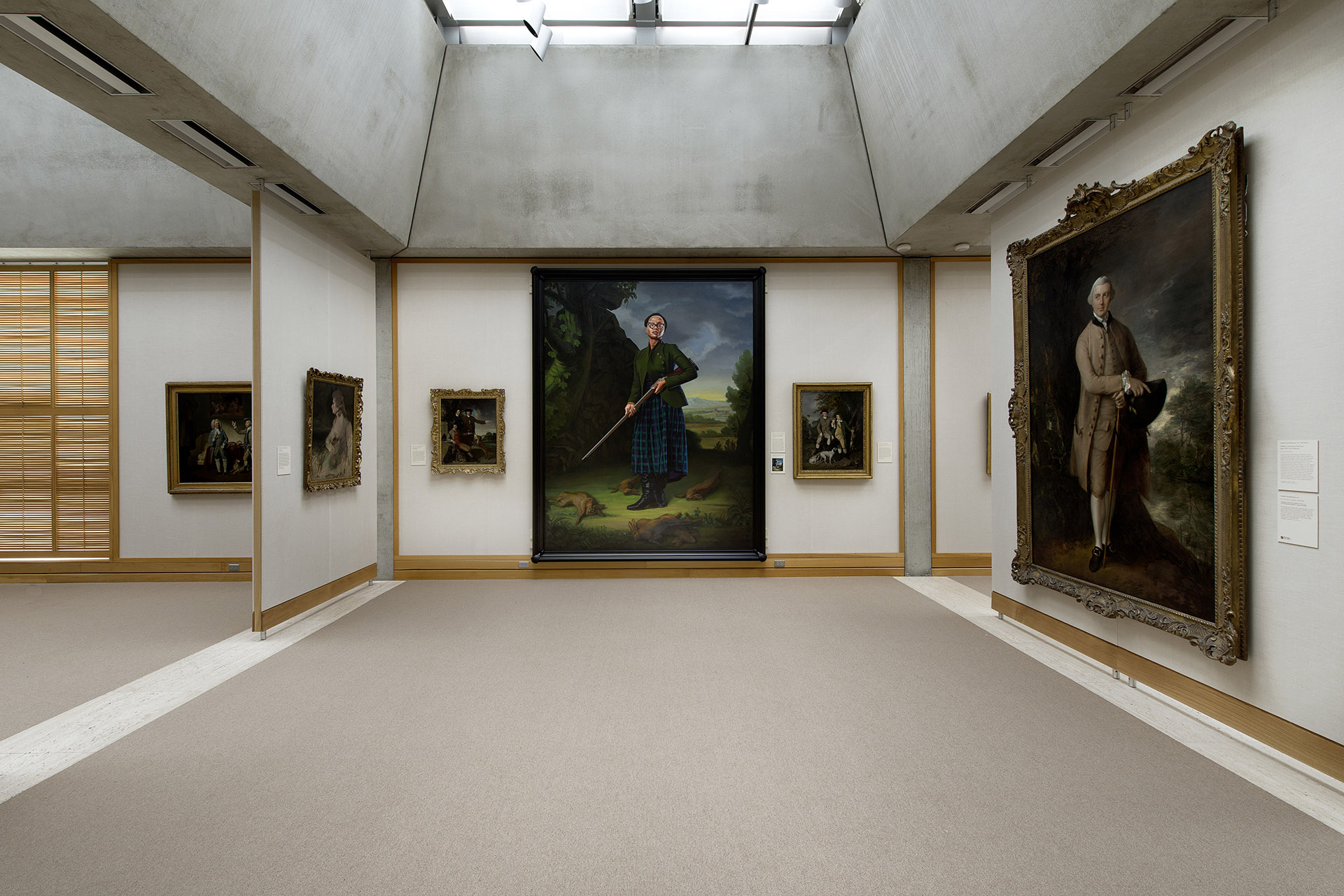Kehinde Wiley's “Portrait of Lynette Yiadom-Boakye, Jacob Morland of Capplethwaite”
Object of the Week
March 31, 2020
To mark the final day of Women’s History Month, we’re featuring a portrait of the celebrated British artist Lynette Yiadom-Boakye by the American painter Kehinde Wiley (Yale MFA 2001). Visitors immediately noticed this monumental work, painted in 2017, surrounded by eighteenth-century portraits, which is a rare example of a contemporary painting juxtaposed with historic art in our galleries. Wiley, who studied at the Yale School of Art, is perhaps best known for his portrait of President Barack Obama for the National Portrait Gallery in Washington, DC. We’ve asked our Chief Curator of Art Collections, Matthew Hargraves, to share his insight into the work and its presentation at the Center. Here’s what Hargraves had to say:
What sparked your idea to bring Kehinde Wiley’s portrait of Lynette Yiadom-Boakye to the Yale Center for British Art?
Last year at the Center, I had the privilege of working with Hilton Als on his Lynette Yiadom-Boakye exhibition that was presented on the second floor among our modern and contemporary collections. During the planning of that show, the idea came to me of borrowing Kehinde Wiley’s great portrait of Yiadom-Boakye and to hang it among our eighteenth-century portraits on floor four to link the two floors during the run of the exhibition. For me, making these connections and seeing visitors respond and get excited about art is what makes my job as a curator worthwhile.

How was Wiley inspired to paint this portrait?
Yiadom-Boakye shared some of the story behind the painting’s creation. Wiley invited her to sit for her portrait while he was in London. I think she imagined he would paint her in the style of a John Singer Sargent, but because Yiadom-Boakye came dressed in the clothes she is wearing in the finished painting, Wiley immediately thought of a hunting portrait. The result is based on a small portrait by George Romney from around 1760 in the collection of the Tate Britain. Yiadom-Boakye saw her portrait for the very first time here at the Center.

How does this portrait speak to those that hang nearby?
Eighteenth-century portraits are often incredibly beautiful, though they also reveal some of the uglier realities of their time. Wiley’s painting hangs where a Thomas Gainsborough portrait was formerly displayed. Gainsborough’s sitter, Lord Pulteney, made his fortune through Caribbean estates producing sugar through slave labor. Wiley’s portrait of Yiadom-Boakye adopts the codes of eighteenth-century pictures like Gainsborough’s but speaks boldly of the changed world we now inhabit, of our own social and political moment. Lord Pulteney’s portrait hangs nearby but has moved, ceding the space to Wiley’s monumental representation of a powerful woman artist.

Interview by Courtney Skipton Long, Acting Assistant Curator of Prints and Drawings, Yale Center for British Art


